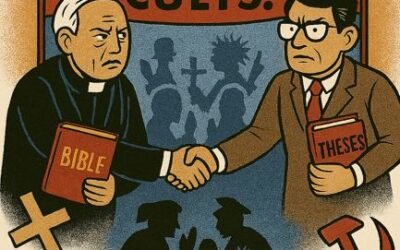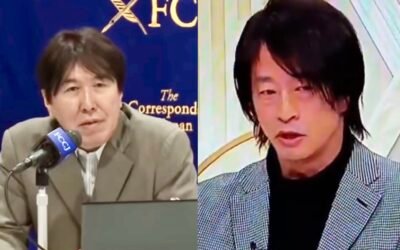The role of Chairman Lee as the “promised pastor” is at the heart of the movement’s millenarian theology.
by Massimo Introvigne and Alessandro Amicarelli
Article 3 of 4. Read article 1 and article 2.

Shincheonji insists that, strictly speaking, it does not have a “doctrine,” as doctrines are created by humans while Shincheonji’s teachings are all found in the Bible. The Bible is interpreted allegorically and through the method historians of Christianity call “typology,” where events of the Old Testament are considered as “types” to which parallel “antitypes” correspond in the New Testament. Shincheonji believes that, although the Bible records historical facts, prophecies are expressed through parables. These prophecies are the promises that will be fulfilled in the future. Shincheonji teaches that, when the prophecies are physically fulfilled, the true meaning of the parables can be understood. For example, the tree of life and the tree of knowledge of good and evil in the Garden of Eden were not real trees, but symbols referring to two types of pastors and spirits working with them, coming respectively from God and Satan.
Regarding the content, the Bible according to Shincheonji is divided into history, moral instruction, prophecy, and fulfillment. Shincheonji teaches that promised future events in the Bible are announced in prophecies, and these prophecies are presented in parables. When the events develop according to the prophecies, the true meaning of the parables becomes known. According to Shincheonji, there is a consistency between the Old and the New Testament. The prophecies in the Old Testament were fulfilled during Jesus’ first coming, and the prophecies of the New Testament are fulfilled during the Second Coming. The Second Coming is today, and the fulfillment of the New Testament prophecies is Shincheonji itself.
Shincheonji believes that God created both the spiritual and the physical realm. Because in the spiritual realm Satan sinned and separated from God, in the physical realm two seeds, the seed of God and the seed of Satan, were sowed in the heart of humans. The parable of the two seeds (Matthew 13:24–30) is the first story we should understand out of all the parables Jesus told, and the two spiritual seeds reappear through the whole of human history. In the Garden of Eden, the two seeds correspond to God, who is the tree of life, and the devil, who is the tree of the knowledge of good and evil.
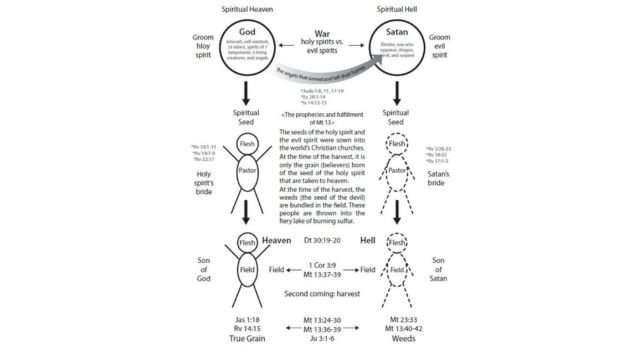
In Daniel 4, the evil King Nebuchadnezzar of Babylon is also described as a tree and represents the tree of the knowledge of good and evil, while God’s chosen people represent the tree of life. In the Gospels, Jesus is the tree of life, the true vine (John 15:1–5), and the Pharisees are the tree of the knowledge of good and evil.
In the Lord’s Prayer, whose interpretation is also crucial for Shincheonji, Christians ask God that his “will be done on earth as it is in heaven” (Matthew 6:10). God’s will is done in heaven, but after Adam’s sin, it was not done on earth. God acted on earth for the restoration of his will through several providential figures or “pastors,” including Noah, Abraham, Moses, and Joshua. A scheme of salvation (through a covenant with God) after betrayal and destruction was repeated throughout the different eras. Among the people God chooses, some betray and destroy his covenant until a new covenant is fulfilled.
Shincheonji views the Bible as a succession of covenants between God and groups identified as the “recipients” of each covenant. The covenant God established with the Israelites in the era of the Old Testament was not faithfully kept by the recipients. God thus changed the recipients of the covenant, substituting the Physical Israelites with the Spiritual Israelites (i.e., the Christians) in the new covenant that was established by Jesus. Today, Christians need to keep the new covenant made with Jesus’ blood (Luke 22:14–20) and join the New Spiritual Israel.
Jesus saved humans from their sins by carrying the cross (Matthew 1:21). God’s spirit came and dwelt with Jesus. At the first coming of Jesus, the Physical Israel came to an end and was replaced by the Spiritual Israel. Jesus was betrayed by Judas Iscariot just as one of the Twelve Tribes, Dan, had betrayed the Physical Israel. After Jesus left this earth and ascended to heaven, his message was gradually betrayed by the Catholic and Protestant churches. As Shincheonji interprets John 9:4–5, they explain that the world became dark when the “promised pastor,” Jesus, who worked with God, was no longer present on earth. Shincheonji teaches that the New Testament and the Book of Revelation prophesy that the promised pastor will come at the second coming, overcome the false pastors representing the group led by Satan (the “Nicolaites” of Revelation 2 and 3), and establish the third Israel, the New Spiritual Israel.
The promised pastor of the New Testament, however, could only appear after a figure, or figures, performing the role of John the Baptist would manifest themselves, and after a new process of betrayal and destruction (2 Thessalonians 2:1–4). Shincheonji teaches that the events prophesied in the Book of Revelation were physically fulfilled in Korea in the 20th century. The role of John the Baptist was performed (at the second coming of Jesus) by the seven messengers of the religious movement known as the Tabernacle Temple, the seven lampstands (Revelation 1:20), holding lamps that burned in the night for a time until the promised pastor came. As mentioned in the first article of this series, according to Shincheonji, the betrayal prophesied in different books of the New Testament (2 Thessalonians 2:1–4; Matthew 8:11– 12; Matthew 24:12), in addition to the Book of Revelation, was fulfilled through the corruption of the Tabernacle Temple. Oh was the chief destroyer who persuaded many in the Tabernacle to receive the mark of the Beast (Revelation 13), i.e., the false teachings of the mainline Christian churches.
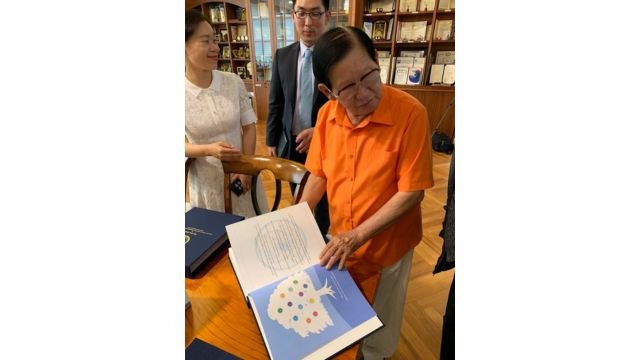
At that time, just when Satan’s Nicolaites had invaded the tabernacle where the seven messengers worked (Revelation 2 and 3), “one who overcomes” appeared, defeated Satan’s pastor, the destroyer, and received authority from God and Jesus as the promised pastor. He received an opened book from an angel coming from Heaven (Revelation 10) after Jesus had broken the seven seals (Revelation 6 and 8) of the sealed book of Revelation 5. This is the same as how, at the time of the First Coming, Jesus received and ate the open scroll recorded in Ezekiel 3 and delivered it to the rebellious Israel. The sealed book in Revelation 5 is now open, and the promised pastor can testify the words of prophecy recorded in the book and their physical fulfillment.
The promised pastor of the New Testament that Shincheonji announces is Chairman Lee. This teaching is often misunderstood by critics, who claim that Shincheonji regards Chairman Lee as God or Jesus. This is not the case.
Chairman Lee is regarded as a man, not as God, although in the last days, after being chosen by Jesus, he takes on the role of a “messenger who speaks on his behalf,” testifying to the world about what he has seen and heard (the fulfilled reality of Revelation).
In John 14:16–17 and 26, the “advocate” is the Holy Spirit. This, Shincheonji teaches, refers to a “spiritual advocate” whom Jesus sends to earth in the last days. However, the “spiritual advocate” works and speaks through a physical advocate (John 14:17), i.e., Chairman Lee. Shincheonji teaches that Jesus was also the physical advocate at his first coming, as he worked with the Holy Spirit, and indicates Ezekiel 1–3 as prophecy and 1 John 2:1 and John 17:8 as fulfillment.
Having conquered the evil Nicolaites, the promised pastor established the new heaven and new earth (Shincheonji) as the New Spiritual Israel, and restored God’s kingdom on this earth. From the new Twelve Tribes, 144,000 saints (Revelation 7:2–8 and 14:1–5), the sealed 12,000 from each tribe, will participate in the “first resurrection,” become one with the souls of the martyrs who will descend from Heaven, and reign on earth with Jesus for 1,000 years as priests and kings. The return of the martyrs is not intended as a sort of “possession” of humans by the martyrs’ souls. The martyrs will resurrect in spiritual, heavenly bodies (1 Corinthians 15) and will reign together with the 144,000 saints in a family relationship of sort.

Currently, the number of Shincheonji followers has exceeded 144,000. Amongst them, 12,000 from each of the 12 tribes who are sealed make up the 144,000. Some will belong to the “Great White Multitude” (Revelation 7:9–10). Satan, Lee wrote, “will be locked up during the 1,000 years, but he will be set free again when the 1,000 years are over,” although “those inside the holy city [Shincheonji] will not be harmed.” After the 1,000 years and this final temptation, Satan and those corrupted by him will be thrown into hell (Revelation 20:7–10), while those belonging to the seed of God will live forever in the new heaven and new earth.
Prophecies, Shincheonji claims, indicate that the promised pastor will not die and will enter the millennial Kingdom of God with his body, together with many others who are alive today and will survive until the Millennium will come.
However, when asked what would happen if Chairman Lee, who is now 93, will die, Shincheonji members simply answer that everything will happen according to the will of God, who until now has fulfilled every promise he made.
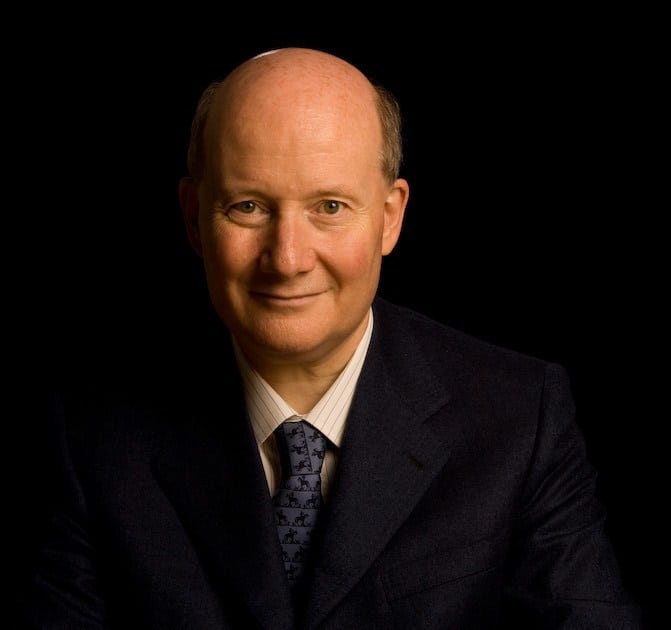
Massimo Introvigne (born June 14, 1955 in Rome) is an Italian sociologist of religions. He is the founder and managing director of the Center for Studies on New Religions (CESNUR), an international network of scholars who study new religious movements. Introvigne is the author of some 70 books and more than 100 articles in the field of sociology of religion. He was the main author of the Enciclopedia delle religioni in Italia (Encyclopedia of Religions in Italy). He is a member of the editorial board for the Interdisciplinary Journal of Research on Religion and of the executive board of University of California Press’ Nova Religio. From January 5 to December 31, 2011, he has served as the “Representative on combating racism, xenophobia and discrimination, with a special focus on discrimination against Christians and members of other religions” of the Organization for Security and Co-operation in Europe (OSCE). From 2012 to 2015 he served as chairperson of the Observatory of Religious Liberty, instituted by the Italian Ministry of Foreign Affairs in order to monitor problems of religious liberty on a worldwide scale.

